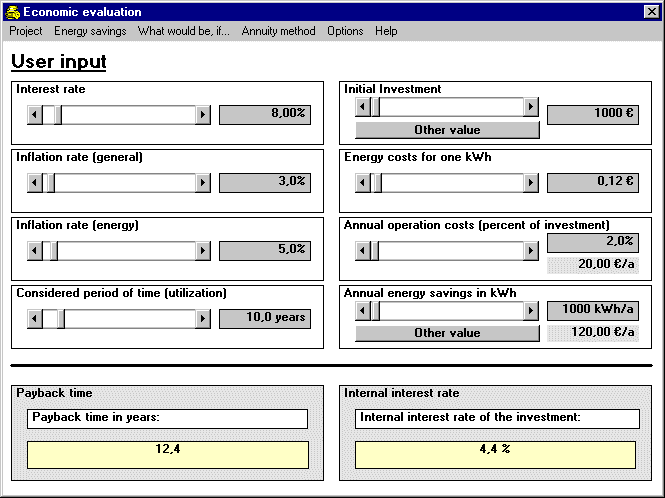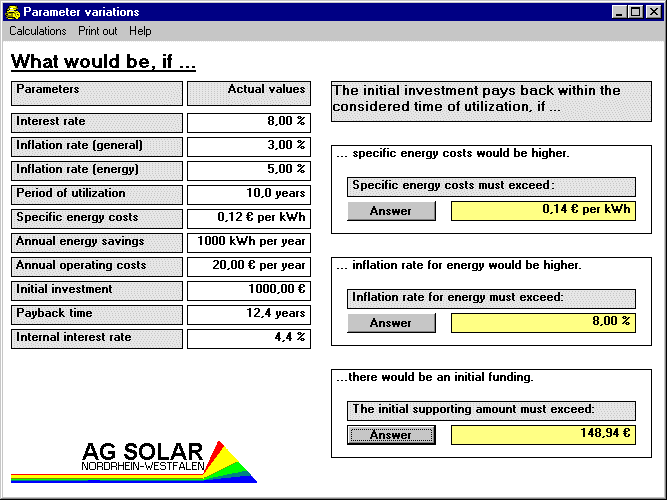
The program Economic Evaluation evaluates the economic efficiency of an investment according to the capital value method.
Any investment into energy saving measures usually consists of the acquisition or the replacement of a system. Cost flows originate from the following scenario.

The user-interface of Economic Evaluation.
On the one hand, costs for the investment arise at the moment of buying. But also later costs have to be paid, e.g. for the maintenance of the system. Thereby, the program assumes, that these costs fall due at the end of each year.
On the other hand, savings or revenues arise from this investment which can be seen from the yearly calculation of energy costs. To make a statement about the economic efficiency during the considered period of time (less or equal the life time), all revenues and expenditures have to be added whereby they have to be discounted to a common point in time which is usually the end of the considered period of time or the time of the initial investment.
The important figures for economic efficiency are:
The first condition for efficiency is, that the payback time must be shorter than the life time of the system, resp. the considered period of time (utilization).
If this condition is met, the internal interest rate is a second figure to assess the economic efficiency of an investment. It depends on the considered period of time. The internal interest rate should be larger than or equal to the interest rate for the capital investment. In this case, the input value "interest rate" has no influence on the calculation of the internal interest. For the first case, the payback time depends on the interest rate for capital investment given by the user. Here, the considered period of time has no influence on the results.
When comparing two alternatives of investments, the time series of annual differences between costs and revenues has to be considered.

Parameter variations with Economic Evaluation
Economic Evaluation considers the following parameters:
If any project does not pay back for the given parameters the tool Economic Evaluation can determine conditions which would make the actual investment economically viable.
One of them could be for example an initial financial support given by any institution. Or, by market conditions, the inflation rate for energy could be higher. Another condition to reach economic viability is to increase the energy costs for the considered period of time. This effectively happens by serveral taxes for example on energy consumption.
Economic Evaluation is available for you as a free demo-version (in English) in the WWW. The demo-version is fully operational, but limited in the time you can test it (10 days).